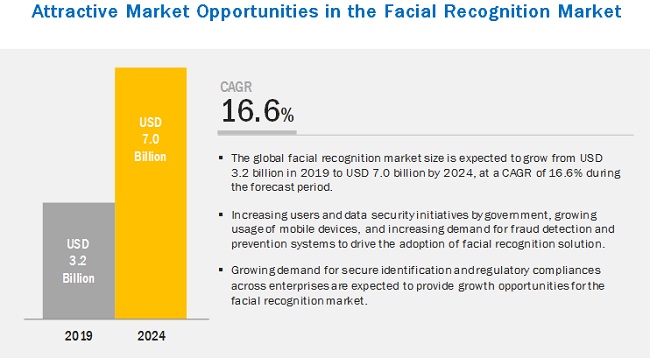We’re excited to share that we’ve just added another powerful image recognition capability to our offering – Facial Recognition API for face detection and recognition of faces in still images and live stream videos.
Using the API, companies can implement face recognition functionality in their web, desktop, and mobile applications and systems.
How the facial recognition algorithm sees a face?
The face recognition algorithm “sees” a face as a complex numerical code containing hundreds of facial measurements. Examples of facial measurements include: the distance between the eyes, the width of the nose, length of the jawline, depth of the eye sockets, shape of your cheekbones, and more. These specific facial measurements are called nodal points, and each face has 500 such points. The unique combination of all these measurements creates an anonymous numerical code, which represents the face in the database.
How facial recognition works?
- Face detection
First, the face is extracted from the rest of the image using a technology called object localization. - Face analysis
Often the head is tilted, which can distort the data, so the technology locates the face attributes like eyes, nose and ears to correct the face rotation or tilt. Then it takes the facial measurements of the reference image and creates the unique numerical code we mentioned above. - Comparison
The last step is looking for the exact match or one with a high level of confidence in a pre-defined or custom, still or dynamic database.
Is face verification possible with Imagga Facial Recognition API?
Face verification compares a reference image of a face to another already present in the database and checks if there is a match. Our API now supports this functionality out-of-the-box and you can implement it directly in your application. Read how.
Facial recognition use cases
The facial recognition market is expected to grow at a fast pace due to increased adoption in both law enforcement and non-law enforcement sectors.

Source: Markets and Markets
Editorial Management Systems use facial recognition to identify and recognize celebrities, politicians, and other public figures — for efficient organization and search in large media archives.
It can be used for personal photo organizations by companies such as telecoms allowing their users to organize their personal photos by the people in the images.
In the video surveillance and analysis sector, facial recognition can be used for the analysis of video footage to identify key people and their attributes like age, gender and ethnicity.
Another typical application of facial recognition is access control. The technology can be used to ensure that only authorized individuals enter facilities like bank vaults, labs, and other sensitive locations, as well as for the time-tracking of employees.
Read more about the image recognition trends in 2020.
You have a case for image recognition? Let’s talk